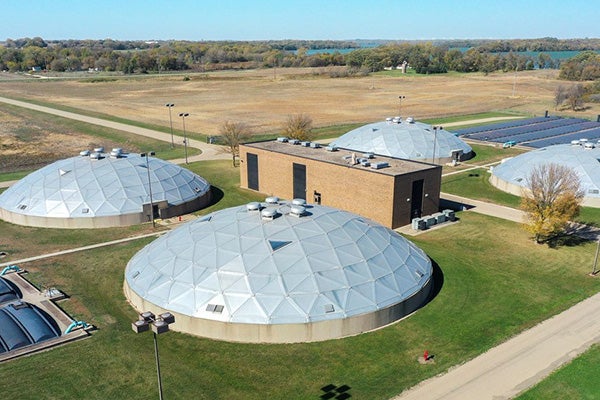City taking new approach to wastewater upgrades
City News October 24, 2025
With stricter pollution limits in place and changes in state grants, the City of Albert Lea has decided to take a phased approach to upgrading its wastewater treatment plant. Built in 1981, the plant needs to replace aging infrastructure while meeting a stricter limit on phosphorus, the nutrient that grows algae, in its state permit. The permit sets conditions for discharging the treated wastewater to the Shell Rock River.
The city requested state funding in 2021, 2023 and 2024 toward rebuilding the entire plant, estimated at $80 million. The engineering firm working on the design recently increased that estimate to $100 million due to inflation. So far, the city has received $2 million, which was included in the 2023 bonding bill.
This year the Minnesota Legislature increased grants for reducing phosphorus in wastewater from $7 million to $12 million. By focusing first on reducing its phosphorus discharge, the city can apply for state funding for each phase.
- Phase 1: The city is using $3 million in state and federal funding toward replacing its grit building, which provides the first step in the treatment process. This building is under construction.
- Phase 2: The city will add equipment, replace some infrastructure and improve some processes to remove more phosphorus from its wastewater discharge. The city plans to apply for a $12 million state grant for this phase, estimated to cost $25 million total.
- Phase 3: The city will replace more infrastructure and add equipment, including new ultraviolet disinfection. The city plans to apply for $25 million in state bonding for this phase, estimated to cost $50 million total.
- Phase 4: The city would delay this phase, which focuses on improving biosolids, or sewage sludge, until securing more state funding.
The plant treats an average of 4 million gallons of wastewater a day, serving Albert Lea and Manchester. The city recently added a solar field, funded in a large part by federal incentives, that will provide about 13% of the plant’s electricity.
